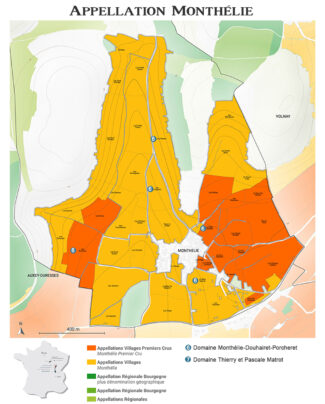Burgundy’s Rustic Wine Belt New Found Opportunities: Changing Climate Advantages Lesser Known Regions; Ambitious Producers Elevate The Wines To New Heights (Auxey-Duresses, 6-Bottle Pack $399) (Monthélie, 5-Bottle Pack $279) (Saint-Romain, 3-Bottle Pack $159)
Climate change gets a lot of ink in this newsletter, and there’s a reason for it: Consistently elevated temperatures and unpredictably violent weather is having a profound effect on some of the world’s most celebrated wine regions, and the new normal is becoming ‘adapt or fade away.’
This week, we will take a peek behind the Doppler radar curtain to see how regions once considered marginal by grape-growing standards are finding new opportunities in the shifting panoply of weather patterns and rising, rung by rung, up the ladder of excellence.
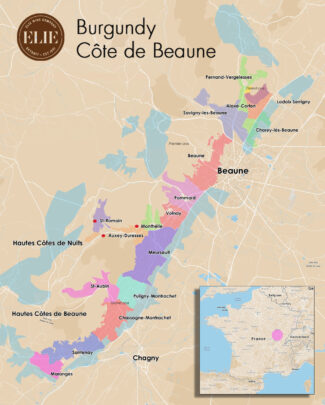
The Impact of Climate Change on Burgundy: Upending The Status Quo
Dateline Burgundy, 2022: “As a fourth consecutive growing season is marred by extreme heat and frost, historical and predictive data suggests we can expect the same this year, too.”
2022 came close to fulfilling this prophecy, with a salvaging rain in June. 2023, just drawing to a close, mirrored these conditions, with excessive heat and a bit more rain. In general, however, even with adequate rainfall, consistently above-average daytime temperatures have become a feature in modern Burgundian vineyards. The effect is felt across the entire European continent, of course, and everywhere that grape vines thrive, but Burgundy’s Achilles heel is that it has placed the bulk of its eggs in two baskets: Pinot Noir and Chardonnay. Pinot, being thin-skinned, suffers from too much direct sunlight; alternately, excessive rain may encourage the multiple mildews that Pinot’s flesh is heir to. Chardonnay, while better suited to the heat, may be devastated by late or severe frosts, which are appearing with greater frequency under the changing climate.
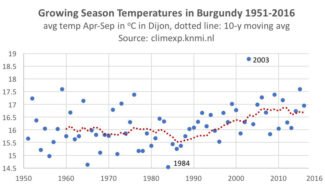
And now, the flip side of the coin: Burgundy, long beholden to classification, has begun to see once-marginal sites producing better wines, and it has been suggested that the entire system be revamped. Naturally, fundamentalists express disdain for the step taken by wine boards in Bordeaux: Approving the inclusion of new varieties better able to withstand spring frosts and dog-days heat. Previously neglected or abandoned grapes such as Aubin, Roublot, Sacy, Melon, César and Tressot are among the Burgundian candidates, some of which are already planted in small amounts around the region.
Although Burgundy’s reputation is built upon tradition, with many of the established estates having dominated the scene for centuries, the danger of ignoring the shifting tides of climate is the greatest threat of all. Without a profound re-imagining of habits built up through generations of winemaking, classified Burgundy wine may become what we consider to be unthinkable: Ordinary.
Solar Vintages Roll: 2018, 2019 And 2020
On average, Burgundy sees 1900 hours of sunshine per year; glance at a diagram and you’ll see a neat curve that peaks in July with around 258 sunlit hours and then drops off precipitously for the rest of the year. Vintages that bring considerably more sun hours are referred to as ‘solar’ vintages. 2018, 2019 and 2020 go down as a triumvirate of such vintages.
Even before en primeur orders were placed, 2018 was being hailed as a vintage that resembled the ideal conditions of 1947. Hopes ran high that the atypical ripeness and plushness of the wines might represent a ‘new normal’ in Burgundy. Part of the success of the vintage, in particular for the whites (which show gobs of energetic freshness and alluring fruit) was a particularly wet preceding winter that raised water tables high enough that the ensuing drought was handled easily, especially by more mature vines. The factor most crucial to success was determining harvest dates—pick too soon, and the fruit will not be phenologically ripe; too late, the grapes will flab out and lose acidity.
2019 followed with another bullseye. Dimitri Bazas, director of Maison Champy in Beaune, said, “If you offer me a contract for 30 years and it promises me that every year will be like 2019, then I would say, where do I sign?” The ideal ripeness and special personality of the vintage lies in a growing season that was the third-warmest year of the last century. Two short blasts of extreme heat at the end of June and the end of July were offset by enough rain to prevent serious drought stress to the vines.
2020 cranked up the above conditions another notch; it became a vintage in which one said ‘despite’ rather than ‘because of.’ Even the most experienced taster doubted that the heat and dryness, forcing harvest in August, could possibly produce such a fresh and joyous style. This was a vintage that tested Burgundian vignerons to the max; adaptability and careful attention to the vagaries of nature was key. In 2019, wine from high on the slopes of the Côte d’Or showed the highest levels of dry extract and salty minerality, providing balance for the ripe fruit, while in 2020, the extract combined with fresh acidity to make the wine truly electric.
(6-Bottle Pack $399)
Auxey-Duresses
There was a time when the wines of Auxey-Duresses were sold under false premises—the reds were named Volnay and the whites, Meursault. In fact, experts could easily tell the difference. Yet, the differences have begun to evaporate as a new generation of winemakers in the appellation, coupled with a changing climate, has realized that Auxey-Duresses grapes may have the breeding to rival their hallowed neighbors without the need of fraud.
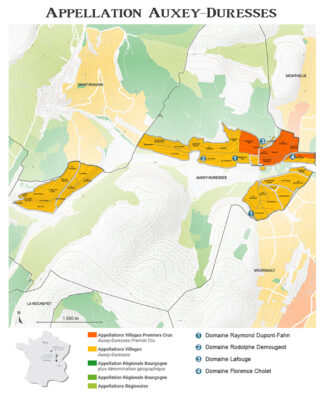
The first obstacle they had to overcome was geography. Unlike Meursault and Volnay, Auxey-Duresses vines cling to a variety of high slopes and have traditionally produced a hard red wine that is frequently sold to négociants for Bourgogne Rouge blends. But with patience, these same grapes, when bottled at estates within the appellation, improve immeasurably and become silken gems that may rival nearby powerhouses at a fraction of the cost.
Likewise Auxey-Duresses whites that may initially produce the hazelnut whiffs familiar to fans of Meursault, are beginning to produce wines of increasing depth that improve exponentially in the cellar. The warmer weather has been a godsend to intrepid vignerons who have raised the value of Auxey-Duresses far beyond its current price tag.
Domaine Raymond Dupont-Fahn
Raymond Dupont-Fahn is a fifth generation winemaker who began working in the family business as a child. After earning a Bac d’Oenologie diploma, he took over 12 acres of vines from his father, including plots in Meursault, Puligny-Montrachet and Auxey-Duresses. The domain is located in the village of Tailly in Meursault. As a winemaker, Raymond has cut down on the use of new oak (from the 40% used by his father to just 10%), with barrels that are no newer than three years. He uses no pesticides in the vineyards, aiming to be as sustainable as he can, and harvests slightly earlier than his neighbors to produce wines with better acidity and lower alcohol.
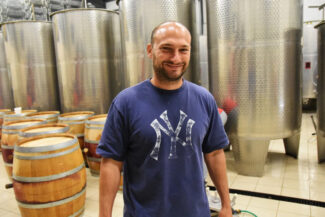
Raymond Dupont-Fahn
“My secret to success is no secret at all,” he says. “I work hard in the vineyard, without pesticides/herbicides and keep a meticulously clean cellar. I am not a fan of new oak or racking; I only stir to avoid overt reduction.”
He also tends to harvest right as the fruit reaches peak maturity, avoiding over-ripeness in a quest for a bright, pure and transparent style of Chardonnay.
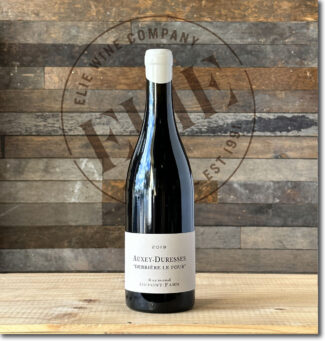 Domaine Raymond Dupont-Fahn, 2019 Auxey-Duresses ‘Derrière le Four’ ($50)
Domaine Raymond Dupont-Fahn, 2019 Auxey-Duresses ‘Derrière le Four’ ($50)
Meaning ‘behind the oven’, ‘Derrière le Four’ is heavily scented with crushed raspberry, wild strawberry, and pomegranate along with hints of white pepper and herbs. It is an ideal Pinot Noir with delicate floral aromas to offset the tension between crunchy acidity and refined tannins.
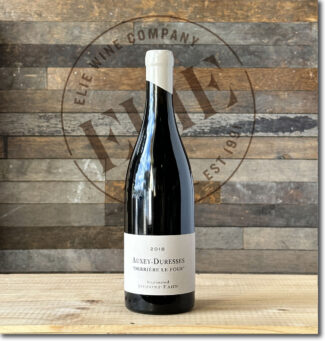 Domaine Raymond Dupont-Fahn, 2018 Auxey-Duresses ‘Derrière le Four’ ($50)
Domaine Raymond Dupont-Fahn, 2018 Auxey-Duresses ‘Derrière le Four’ ($50)
The 2018 incarnation of ‘Behind the Oven’ with an extra year under its belt. Same profile as above with a tighter lens focused on this label’s potential.
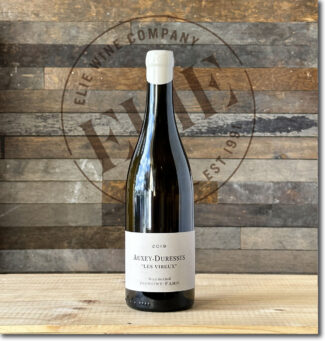 Domaine Raymond Dupont-Fahn, 2019 Auxey-Duresses ‘Les Vireux’ Blanc ($55)
Domaine Raymond Dupont-Fahn, 2019 Auxey-Duresses ‘Les Vireux’ Blanc ($55)
‘Vireux’ might be directly translated as ‘noxious’ but here comes from ‘virer’, meaning ‘change’, as in the expression ‘virer de tout vent’—to be as changeable as the wind. The vineyard is located five hundred feet above the Meursault ‘Les Clous’ with northeast exposure; the wine shows lithe notes of crisp apple braced by a minerality that approaches salinity.
Domaine Rodolphe Demougeot
No one has summarized the trajectory of excellence in winemaking more succinctly than Rodolphe Demougeot: “One first needs to learn to be a good farmer, and only then learn to improve performance in the cellar.”
He further explains that in order to move away from the chemical farming used at the family estate he took over in 1992, he had to deprogram first himself and then the vineyards, an undertaking of several years. In the meantime, his interest in the inexplicable but observable energies of the cosmos and its influence on grapes and wine came to be central to his decision making: “The moon is my compass for the timing of processes during growing, farming, picking, racking, and bottling,” he says.
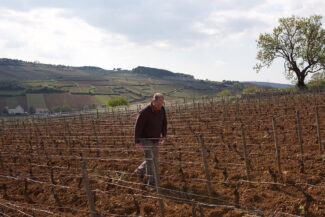
Rodolphe Demougeot
He plows most of his twenty acres by tractor, but in his top sites, like the Pommard, Premier Cru Les Charmots, he works with a horse. His cluster selection is made early in the season to concentrate the energy of the vines to fewer clusters through the fruiting season.
He describes his holdings like this: “We are principally between Meursault and Pommard, with only a single Premier Cru site in Pommard (Les Charmots) and many favorable village parcels between the two. In Meursault, all three parcels are on the south end of the appellation in fabulous spots above and below the great Premier Crus, Perrières, Genevrières, and Charmes. I have a small collection in Beaune, both red and white, as well as a village and Premier Cru in Savigny-lès-Beaune. Additionally, I work sites in Auxey-Duresses and Monthélie, fine and savory wines for those moments you need a stroll through the wet forest and all of its lovely fresh smells.”
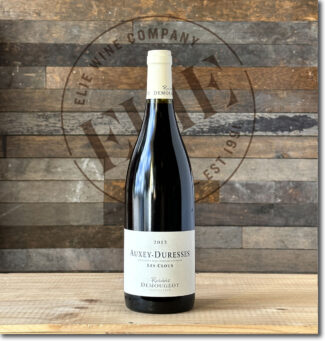 Domaine Rodolphe Demougeot, 2015 Auxey-Duresses ‘Les Clous’ ($79)
Domaine Rodolphe Demougeot, 2015 Auxey-Duresses ‘Les Clous’ ($79)
‘Les Clous’ comes from Demougeot’s single acre of Pinot Noir planted in a direct south exposition—perfect for this sometimes cooler to the west of Meursault and between Monthélie and Saint-Romain. It does not receive much rain, and other than hail, it is a lieu-dit with a bright future in the face of climate change. The wine is aged in 85% French oak barrels with between one and six vintages of use for 14-16 months, resulting in a dynamic blend of ripe red fruit and integrated and elegant tannins.
Domaine Lafouge
Gilles Lafouge’s recipe for success can be broken down into three rudiments: Old vines, properly cultivated soils and classical winemaking techniques: “That these wines age beautifully, I can personally testify, having enjoyed a lovely 1969 Auxey-Duresses Premier Cru La Chapelle last summer—an unexpected but happy encounter on a local wine list,” says William Kelley of Robert Parker’s Wine Advocate.
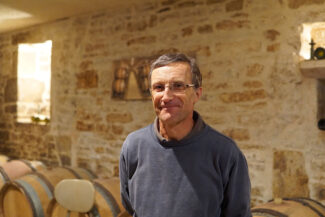
Gilles Lafouge
The family’s estate, whose history in the area traces back to 1670, covers 25 acres in Auxey-Duresses, including plots in Premier Cru Climats du Val, La Chapelle, Les Duresses and Les Ecussaux.
In 1986, after wine school and national service, Gilles came back to work with his father, Jean and initiated a small revolution: Estate-bottling. The next generation is already heavily involved rather than simply waiting in the wings; Maxime Lafouge will represent the new vintage of winemakers who may indeed launch his own revolution.
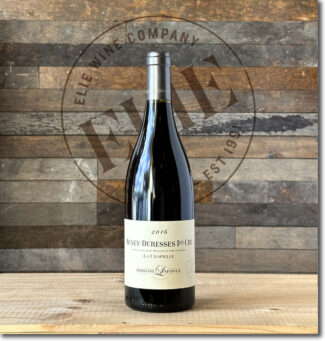 Domaine Lafouge, 2016 Auxey-Duresses Premier Cru La Chapelle ($87)
Domaine Lafouge, 2016 Auxey-Duresses Premier Cru La Chapelle ($87)
‘La Chapelle’ is a climat within Les Breterins and Reugne on the steep slope of la Montagne de Bourdon, facing south/southeast. The vines are well-placed in mid-slope and are around sixty years old, making it the most generous of the three Lafouge Premier Crus. The soils are partially marnes blanches, contributing to the supple style—a classically proportioned blend of black cherries, a touch of cocoa powder, lovely soil tones, currant leaf, bonfire smoke and cedar.
Domaine Florence Cholet
Domaine Florence Cholet is an estate formed by Florence’s father Christian in 1976 (as Domaine Christian Cholet-Pelletier) who was joined in 1982 by his wife Anne. Located in the tiny village of Corcelles-les-Arts east of Puligny Montrachet and directly across from Meursault, the 18 acres of marl and limestone are planted to 75% Chardonnay and 25% Pinot Noir; vines range from 25 to 75 years in age and the estate bottles about 1400 cases per year.
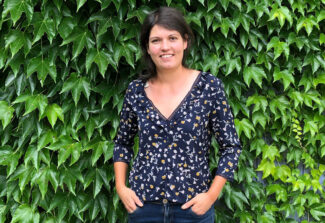
Florence Cholet
Having gained work experience across France (Chapoutier), the United States (Walla Walla, Washington) and Australia, their daughter Florence studied biology and biochemistry at the University of Burgundy in Dijon where she earned a license in viticulture and a Master’s degree in oenology. In 2019, she returned to Corcelles-les-Arts to take over the estate from her parents, renaming it Domaine Florence Cholet. Among the innovations she brings to the domain is a policy against herbicides and pesticides; she ploughs by horse and allows natural fermentation on native yeasts. New oak is used sparingly at a maximum of 25% and wines are bottled using only a minimum of filtration.
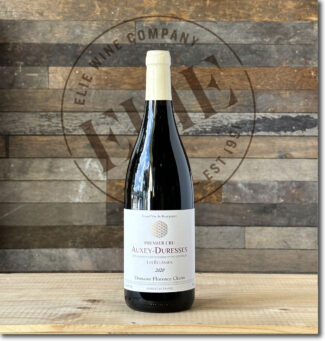 Domaine Florence Cholet, 2020 Auxey-Duresses Premier Cru Les Ecussaux ($71)
Domaine Florence Cholet, 2020 Auxey-Duresses Premier Cru Les Ecussaux ($71)
Les Ecussaux is a Premier Cru vineyard on the Montagne du Bourdon, just to the east of the Auxey-Duresses village, between the roads to Beaune and to Meursault, whose junction forms its most westerly point. To the north lie the Premier Crus Les Duresses and Bas des Duresses. The wine displays firm tannins, crisp blackberry and mulberry, a touch of white pepper and a fleshy finish.
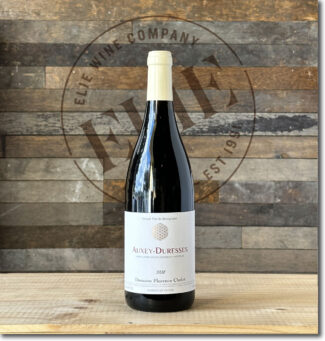 Domaine Florence Cholet, 2020 Auxey-Duresses ($61)
Domaine Florence Cholet, 2020 Auxey-Duresses ($61)
From 60-year-old vines grown between Meursault and Monthélie; Cholet’s penchant for gentle pressing and prolonged fermentation makes this a modern-style Burgundy filled with freshness and perfume. On the palate, there is cranberry crunch with wild strawberries and a touch of dried herb.
(3-Bottle Pack $159)
Saint-Romain
Saint-Romain is a village of 200 inhabitants nestling within a valley behind Auxey-Duresses and surrounded by steep cliffs. Neither the population nor the wine trade ever really recovered from the phylloxera blight of the 19th century, and today, only about 7% of the land is under vine. Like Chorey-lès-Beaune, Saint-Romain has no Grand or Premier Cru sites.
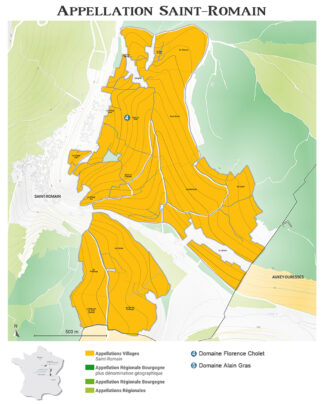
The village is divided in two parts, Saint-Romain-le-Haut and Saint-Romain-le-Bas, one on top of the cliffs and one below, with the bulk of the vineyards in the lower section. It is, nonetheless, a geologist’s Valhalla: Saint-Romain sits on the lias (the earliest period of the Jurassic) and the blend of limestones and marls includes patches of clay. The vines face south/southeast and north/northeast at altitudes varying from 900 to nearly 1300 feet.
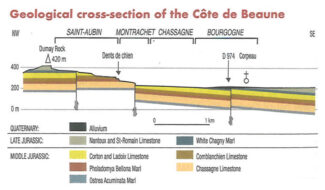
Saint-Romain has always been an appellation that needed warm weather to thrive; it is simply too cold at these elevations to produce stellar wines in normal years. As such, they represent wines to seek out in solar vintages like 2018, 2019 and 2020.
Domaine Alain Gras
Established in 1979, Alain Gras refers to his domain as ‘young’, and considering that Saint-Romain has been occupied for more than 6000 years, there may be truth to that. His vines spread over 30 acres in Saint-Romain, Meursault, and Auxey-Duresses.
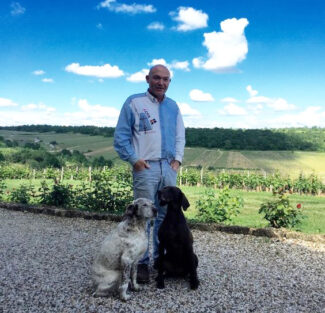
Alain Gras
Gras has found himself as a true ambassador of the Saint-Romain appellation: From a lineage of Burgundy vignerons that dates back five generations, he settled in Saint-Romain with his wife Nathalie and from the outset, their firm mission was to promote the appellation’s value. Joined by his son Arthur, Gras has advanced that value by his passion for rational viticulture and traditional vinification.
Locally acknowledged as Saint-Romain’s pre-eminent vigneron, Alain credits luck as much as talent: “My vineyards are wonderfully sited with a greater proportion of limestone than any other commune in Burgundy. It has also benefited greatly from recent climate change, meaning that sites that were previously overly cool due to their high altitude are now routinely achieving full ripeness and physiological maturity.”
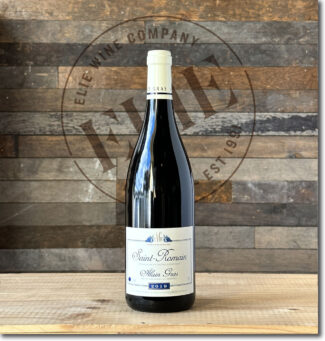 Domaine Alain Gras, 2019 Saint-Romain Rouge ($54)
Domaine Alain Gras, 2019 Saint-Romain Rouge ($54)
Pure Pinot from vines averaging 35 years old; the bunches are 100% de-stemmed, fermented on the skins for 12 to 15 days with daily pump-overs, then aged in 15% new oak for 12 months. The wine shows black-cherry on the nose with notes of licorice and cinnamon in the background, creating an unpretentious profile with a bright floral finish.
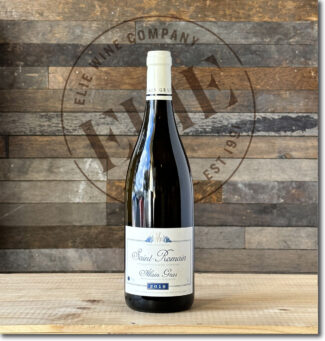 Domaine Alain Gras, 2019 Saint-Romain Blanc ($53)
Domaine Alain Gras, 2019 Saint-Romain Blanc ($53)
From a clay-limestone vineyard where vines—treated with lutte raisonnée—average 40 years old. Green harvesting is practiced and all grapes are hand-harvested; 20% to 30% of the grapes are destemmed before pressing and fermentation takes place in barrels, following which the wine is aged in oak, including 20% new barrels and bottled after 12 months ageing. The wine shows hazelnuts, toasted bread and vanilla, whose delicate wood notes serve only as a background.
(5-Bottle Pack $279)
Monthélie
Author Pierre Poupon describes Monthélie as being “…prettily nestled into the curve of the hillside like the head of Saint John against the shoulder of Jesus. Monthélie resembles a village in Tuscany.”
The appellation is home to 15 Premier Cru climats concentrated in one area to the east of the village, bordering the more prestigious vineyards of Volnay. A rose is a rose, but not all Premier Cru sites are created equal, and traditionally, those of Monthélie are not considered among Burgundy’s finest. Classic Monthélie wines are similar to those of neighboring Volnay (the villages are only a mile apart) but are not quite as full flavored or elegant, but they are generally considered to be superior to the red wines of Auxey-Duresses, also just a mile away in the other direction. Again, these are ideal terroirs to stir in a little extra warmth via global warming and follow the improvements with a corkscrew and glass.
Domaine Monthélie-Douhairet-Porcheret
The triumvirate of names each has its own special significance to the estate. Named first for the 300-year-old Southern Burgundy village in which it is located, Monthelie-Douhairet was run by the Douhairet family for many years. In the early 1970s, the two sisters Armande and Charlotte Douhairet inherited the vines and decided to separate; Armande fought to keep her share while Charlotte sold hers. Then, in 1989, Madame Douhairet asked renowned winemaker André Porcheret to take charge and subsequently, added his name to the domain.
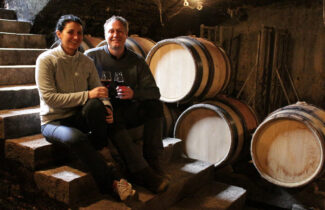
Cataldina Lippo and husband Vincent Monfort
André Porcheret has been one of the great figures in Beaune; prior to overseeing Domaine Monthélie-Douhairet he was the cellar manager at the Hospices de Beaune, then worked for Lalou Bize Leroy to make wines at the newly created Domaine Leroy—whereupon, he returned to the Hospices de Beaune for another five year stint. Today, with his granddaughter Cataldina Lippo, he produces wines on M-D-P’s fifteen acres that are classic, elegant and true to the terroirs of Pommard, Volnay, Meursault and Monthélie.
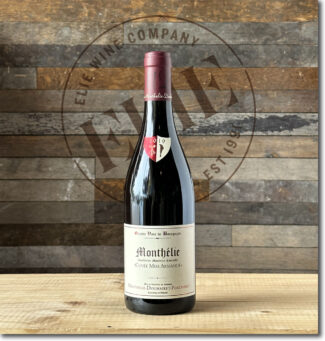 Domaine Monthélie-Douhairet-Porcheret ‘Cuvée Miss Armande’, 2019 Monthélie ($43)
Domaine Monthélie-Douhairet-Porcheret ‘Cuvée Miss Armande’, 2019 Monthélie ($43)
Armande Douhairet, known universally as ‘Miss Armande’, passed away in 2004, and to her memory, this cuvée is dedicated. The elevation of the vineyards, lieux-dits Les Plantes and Les Longènes, is obvious in the brightness of the red fruit, evoking pie cherries, orange rind and raw cocoa. The texture is satiny and succulent, with a core of richness framed by lively acids and powdery tannins.
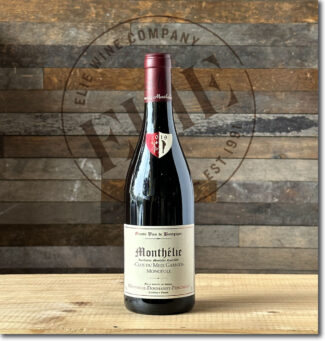 Domaine Monthélie-Douhairet-Porcheret, Monthélie ‘Clos du Meix Garnier’ Monopole ($47)
Domaine Monthélie-Douhairet-Porcheret, Monthélie ‘Clos du Meix Garnier’ Monopole ($47)
‘Clos du Meix Garnier’ is a vineyard entirely owned by the estate—making it a monopole. From these three acres, about 8000 bottles are produced annually; the grapes are 100% de-stemmed and treated to gentle, old school fermentation and maceration before being aged for 18 months in barrels (10% new). Aromas of blood orange, raspberries and plums introduce a satiny wine with tangy acids and chalky tannins.
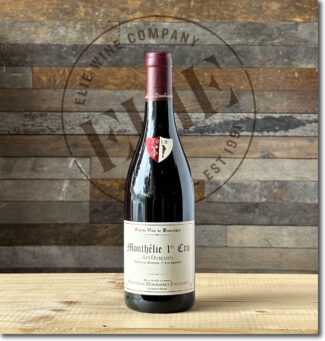 Domaine Monthélie-Douhairet-Porcheret, 2019 Monthélie Premier Cru Les Duresses ($69)
Domaine Monthélie-Douhairet-Porcheret, 2019 Monthélie Premier Cru Les Duresses ($69)
The 16 acres of Les Duresses is the only Premier Cru vineyard on the western side of Monthélie between Volnay and Meursault. Les Duresses is planted to 82% Pinot Noir, although there is some Chardonnay on the upper slope. Soils are pebbly marl with a good proportion of clay, especially lower down the slope. Argovian (Jurassic) limestone provides the minerality for which these wines are famous. The wine displays a similar depth to the Meix Garnier, but is fruitier, like ‘Miss Armande’. There is more muscle, too, with raspberry and strawberry notes showing above slight oak and leading to a lengthy finish.
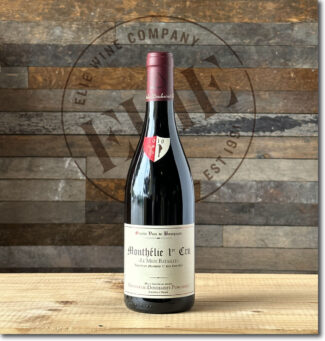 Domaine Monthélie-Douhairet-Porcheret, 2019 Monthélie Premier Cru Le Meix Bataille ($69)
Domaine Monthélie-Douhairet-Porcheret, 2019 Monthélie Premier Cru Le Meix Bataille ($69)
The 5.6 acre ‘Le Meix Bataille’ vineyard sits on the hillside to the northeast and immediately above the village of Monthélie itself on the Volnay side; it is part of the main cluster of Premier Cru vineyards in the appellation that lie on south-facing slopes. Terroir is built around steep slopes with favorable exposures and soils made of the same Bathonian limestone that is found in some of Volnay’s more famous vineyards. The wine shows black cherry confit with discreet oak and fine-grained, vigorous tannins and rather intense minerality that gives is superb aging capability.
Domaine Thierry et Pascale Matrot
In 1914, Joseph Matrot and his wife Marguerite took up residence in Marguerite’s family home with the intention of developing the property into a respected wine estate. Over the course of several generations, Domaine Matrot expanded to fifty acres, and in 2000, began harvesting the vineyards organically.
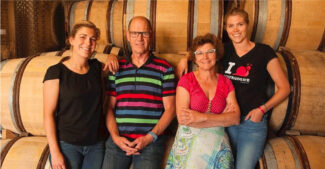
From left: Adèle (left), Thierry, Pascale and Elsa Matrot
Of the change, Thierry Matrot says, “It’s not a revolution, it’s an evolution. Technology has made things easier, but our winemaking philosophy has changed very little. The vinification is about the same. We don’t use new oak for the village wines or the Premier Crus; we prefer to allow the terroir to express itself and to show the character of each vintage. And my father worked in just the same way.”
The estate extends across five villages, producing both regional appellations and several Premier Crus in Meursault and in neighbouring Puligny-Montrachet. Three quarters of the production is white and about 60% is destined for the export market.
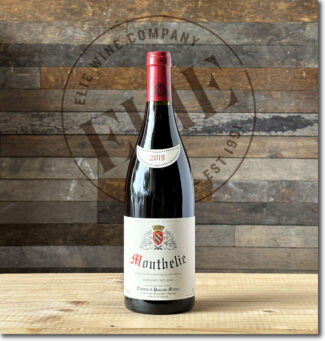 Domaine Thierry et Pascale Matrot, 2019 Monthélie ($53)
Domaine Thierry et Pascale Matrot, 2019 Monthélie ($53)
From an acre of 40-plus-year-old vines just in front of the Clos des Chênes in Volnay. It shows a concentrated floral bouquet of iris and rose petal that complements crunchy red berries. The palate is well-balanced with a fine bead of acidity and a harmonious, long and elegant, Volnay-like finish.
- - -
Posted on 2023.09.27 in Côte de Beaune, Monthélie, Auxey-Duresses, Saint-Romain, France, Burgundy, Wine-Aid Packages
Featured Wines
- Notebook: A’Boudt Town
- Saturday Sips Wines
- Saturday Sips Review Club
- The Champagne Society
- Wine-Aid Packages
Wine Regions
Grape Varieties
Aglianico, Albarino, Albarín Blanco, Albarín Tinto, Albillo, Aleatico, Arbanne, Aubun, Barbarossa, barbera, Beaune, Biancu Gentile, bourboulenc, Cabernet Franc, Cabernet Sauvignon, Caino, Caladoc, Calvi, Carcajolu-Neru, Carignan, Chablis, Chardonnay, Chasselas, Clairette, Corvina, Cot, Counoise, Erbamat, Ferrol, Fiano, Frappato, Friulano, Fromenteau, Fumin, Garnacha, Gewurztraminer, Godello, Graciano, Grenache, Grolleau, Groppello, Juan Garcia, Lambrusco, Loureira, Macabeo, Macabou, Malvasia, Malvasia Nera, Marsanne, Marselan, Marzemino, Melon de Bourgogne, Merlot, Mondeuse, Montanaccia, Montepulciano, Morescola, Morescono, Moscatell, Muscadelle, Muscat, Natural, Nero d'Avola, Parellada, Patrimonio, Petit Meslier, Petit Verdot, Pineau d'Aunis, Pinot Auxerrois, Pinot Blanc, Pinot Gris, Pinot Meunier, Pinot Noir, Poulsard, Prieto Picudo, Rondinella, Rousanne, Roussanne, Sangiovese, Sauvignon Blanc, Savignin, Semillon, Souson, Sparkling, Sumoll, Sylvaner, Syrah, Tannat, Tempranillo, Trebbiano, Trebbiano Valtenesi, Treixadura, Trousseau, Ugni Blanc, vaccarèse, Verdicchio, Vermentino, Viognier, Viura, Xarel-loWines & Events by Date
- April 2024
- March 2024
- February 2024
- January 2024
- December 2023
- November 2023
- October 2023
- September 2023
- August 2023
- July 2023
- June 2023
- May 2023
- April 2023
- March 2023
- February 2023
- January 2023
- December 2022
- November 2022
- October 2022
- September 2022
- August 2022
- July 2022
- June 2022
- May 2022
- April 2022
- March 2022
- February 2022
- January 2022
- December 2021
- November 2021
- October 2021
- September 2021
- August 2021
- July 2021
- June 2021
- May 2021
- April 2021
- March 2021
- February 2021
- January 2021
- December 2020
- November 2020
- October 2020
- September 2020
- August 2020
- July 2020
- June 2020
- May 2020
- April 2020
- March 2020
- February 2020
- January 2020
- December 2019
- November 2019
- October 2019
- September 2019
- August 2019
- July 2019
- June 2019
- May 2019
- April 2019
- March 2019
- February 2019
- January 2019
- December 2018
- November 2018
- October 2018
- September 2018
- August 2018
- July 2018
- June 2018
- May 2018
- April 2018
- March 2018
- February 2018
- January 2018
- December 2017
- November 2017
- October 2017
- September 2017
- August 2017
- July 2017
- June 2017
- May 2017
- April 2017
- March 2017
- February 2017
- January 2017
- December 2016
- November 2016
- October 2016
- September 2016
- August 2016
- July 2016
- June 2016
- May 2016
- April 2016
- March 2016
- February 2016
- January 2016
- December 2015
- November 2015
- October 2015
- September 2015
- August 2015
- July 2015
- June 2015
- May 2015
- April 2015
- March 2015
- February 2015
- January 2015
- December 2014
- November 2014
- October 2014
- September 2014
- August 2014
- July 2014
- June 2014
- April 2014
- March 2014
- February 2014
- January 2014
- December 2013
- November 2013
- October 2013
- September 2013
- August 2013
- July 2013
- June 2013
- May 2013
- April 2013
- March 2013
- February 2013
- January 2013
- December 2012
- November 2012
- October 2012
- February 2004
Search


